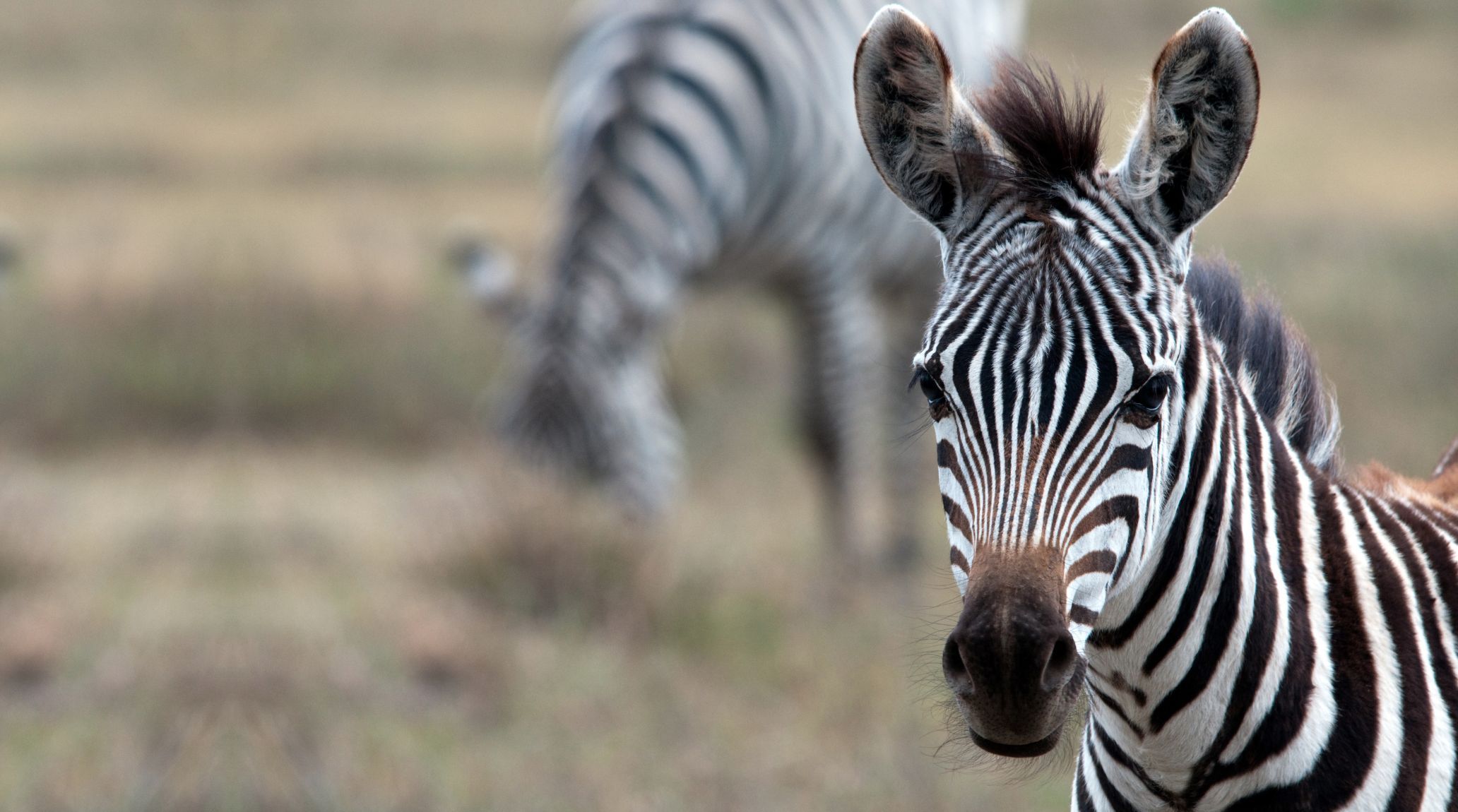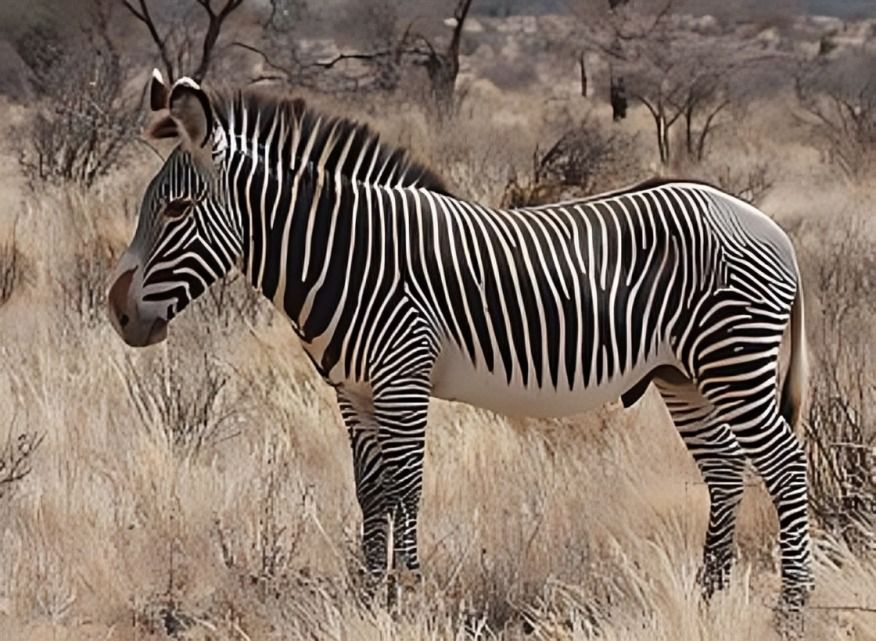
“
Zebras are among the most iconic animals of the African savannas, known for their striking black and white stripes and unique behaviors. In this blog post, we'll delve into their habitats, social structures, and amazing adaptations that help them thrive in the wild. Get ready to discover why zebras are nature's striped marvels and what makes them such intriguing creatures!1
1
”
Zebras are renowned for their distinctive black and white stripes, which are unique to each individual, serving primarily as camouflage in their natural habitats. These stripes help them blend into the grasslands and forests.1
There are three main species of zebras: the plains zebra, Grevy's zebra, and the mountain zebra. Each species occupies different habitats and displays distinct stripe patterns. 2
Zebras possess excellent eyesight and acute hearing, which are crucial for detecting predators like lions and hyenas from a distance. These heightened senses enable them to react quickly to potential dangers.3
Communication among zebras involves a range of vocalizations, including barks, whinnies, and brays. These sounds help zebras coordinate their movements, alert one another to potential threats, and strengthen social bonds within the group. 4
As herbivores, zebras primarily feed on grasses, leaves, and occasionally shrubs. They use their tough lips and teeth to graze and grind vegetation, allowing them to sustain themselves on the plant-based diet available in their environments. 5
Zebras live in intricate social groups with strong family bonds. They form tight-knit family units called harems, led by a dominant stallion, and these groups work together to protect and care for each other.6
Zebras are capable of running at speeds of up to 65 kilometers per hour (40 mph), a remarkable adaptation for escaping predators. This speed allows them to make swift and sudden escapes when threatened.7
Female zebras have a gestation period of about 12 to 14 months before giving birth to a single foal. The foal is usually born in a safe and secluded spot, ensuring its initial protection from predators. 8

Newborn foals are able to stand and walk within hours of birth, a crucial ability that helps them keep up with the herd and avoid predators. This early mobility is essential for their survival, as they must quickly adapt to the dangers of their environment.
Contrary to popular belief, zebras require a daily intake of water when it is available. In arid regions where water sources are scarce, this need becomes even more critical. Daily hydration is vital for maintaining their health and well-being.9
During the mating season, male zebras engage in fierce competition for dominance to secure mating rights with females in their harem. This competition can be intense and is a key aspect of their reproductive behavior, influencing their social hierarchy.10
The black stripes on a zebra absorb heat, while the white stripes reflect sunlight, aiding in the regulation of their body temperature. This natural adaptation helps them manage their thermal balance.11
Zebras often sleep standing up, taking short naps throughout the day to remain vigilant against predators. Their ability to rest while standing is a defensive strategy that allows them to stay alert and respond quickly to potential threats.12

Certain zebra species, such as the Grevy's zebra, face the threat of endangerment due to habitat loss, human encroachment, and poaching for their skins. Conservation efforts are crucial to protect these species and preserve their populations.
In the wild, zebras can live up to 25 years, although those in captivity may have longer lifespans due to proper care and nutrition. The longevity of zebras is influenced by their living conditions and the level of protection.13
Some zebra populations undertake seasonal migrations in search of water and fresh grazing grounds, covering extensive distances in large herds. These migrations are essential for finding resources and sustaining their large groups.14
The Grevy's zebra (Equus grevyi), the largest zebra species, has the shortest lifespan, reaching up to 31 years. In contrast, the mountain zebra (E. zebra) lives up to 33.2 years, and the plains zebra (E. burchelli) can live up to 38 years.15
Zebras recognize one another by their unique stripe patterns, which is vital for maintaining social cohesion and identifying family members. This individual recognition helps them form and maintain strong social connections within the herd.16
Zebras are primarily diurnal, which means they are most active during the day. They graze, socialize, and travel in herds during daylight hours, utilizing the daylight for foraging and avoiding predators in their natural habitats.17
The Grévy's zebra (Equus grevyi), the rarest zebra species with around 2,680 individuals as of 2016, is found only in Kenya and Ethiopia’s plains and scrubland. Endangered by the IUCN, it is now extinct in Djibouti and Somalia.18


